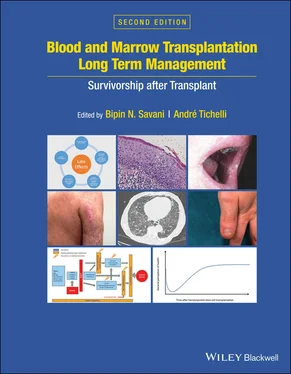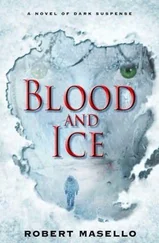The editors Dr. Bipin Savani and Dr. Andre Tichelli are pioneers in the field of transplant late effects and they have selected contributing authors from a worldwide elite of experts in late effects of transplantation. They have amply addressed all the new advances in biology and prevention of late effects and have authoritatively covered all aspects of management of the long‐term transplant survivor. This book should stand as the definitive and most current text on late effects following stem cell transplantation, a field that is now an established specialty in its own right.
John Barrett
Foreword (from first edition)
by Professor John Goldman (1938–2013)
Though sadly, there has been little progress in recent years in some areas of medicine, the clinical use of hematopoietic stem cell transplantation is not one of them. If 50 years ago, one had suggested to an experienced hematologist that one could collect nucleated cells from the marrow or indeed from the blood of normal persons and infuse them in relatively small numbers into a suitably “prepared” patient with leukemia or another hematologic or immunologic disorder and thereby cure the disease, the suggestion would have been greeted with incredulity. In reality, the pioneering preclinical work of many laboratory scientists, the increased understanding of histocompatibility antigen, and the dedicated commitment of clinicians such as Georges Mathé, Robert Good, and Don Thomas laid the foundations for the first successful bone marrow transplant in the 1970s. It is difficult today to appreciate the scepticism or, indeed, formal opposition with which the initial work of these enthusiasts was met.
In the beginning of the 21st century, stem cell transplantation in some form or another is practised in 60 to 70 countries of the world and there is no aspiring hematologist who does not learn early that there are certain diseases for which allogenic or autologous stem cell transplantation offers a real chance of cure or, at worst, just useful palliation. This means that the number of persons surviving and, in many cases, cured of a serious and usually life‐threatening disease has increased enormously in recent years. This collection of papers, written by experts in the field of stem cell transplantation, could not have been contemplated by earlier researchers in the field for the simple reason that the number of patients who had survived long term would have been very few. Today, clinical data on transplant recipients are carefully collected and analysed by two very valuable organizations: on a global scale by the International Center for Blood and Bone Marrow Research and by the European Group for Blood and Marrow Transplantation, which focuses mainly on Europe. Data collated by these two agencies and the multiplicity of individual publications covering many aspects of health in patients alive at 5, 10 or more years after a transplant procedure show clearly that some long‐term survivors do still have specific problems associated with their original transplant procedures, but most of these are relatively minor and eminently treatable. The fact that there are so many “ex‐patients” alive today is a truly impressive testament to the progress that has been made in this field since the 1960s.
Professor John Goldman DM, FRCP, FRCPath, FMedSciHammersmith HospitalImperial College LondonCentre for HaematologyDu Cane RoadLondon, UK
Feras Alfraih MDOncology Center King Faisal Specialist Hospital & Research Center Riyadh, Saudi Arabia
Mahmoud Aljurf MDOncology Center King Faisal Specialist Hospital & Research Center Riyadh, Saudi Arabia
Zeina Al‐Mansour MDDivision of Hematology & Oncology University of Florida College of Medicine Gainesville, FL, USA
Yoshiko Atsuta MD, PhDJapanese Data Center for Hematopoietic Cell Transplantation (JDCHCT) Nagoya, Japan
Andrea Bacigalupo MDDepartment of Hematology Università Cattolica Roma, Italy
Anna Barata PhDDepartment of Health Outcomes and Behavior Moffitt Cancer Center Tampa, FL, USA
Helen Baldomero BMSDivision of Hematology, University Hospital Basel Basel, Switzerland
Neel S. Bhatt MBBS MPHFred Hutchinson Cancer Research Center and University of Washington Seattle, WA, USA
Minoo Battiwalla MDSarah Cannon Blood Cancer Center Network
Margaret F. Bevans RN PhD AOCNUnited States Public Health Service National Institutes of Health, Clinical Center Bethesda, MD, USA
Smita Bhatia MDInstitute for Cancer Outcomes and Survivorship University of Alabama at Birmingham Birmingham, AL, USA
Sumona Bhattacharya MDDigestive Disease Branch National Institute of Diabetes and Digestive and Kidney Diseases National Institutes of Health Bethesda, MD, USA
Shawna Boyle MDUniversity of Nebraska Medical Center Omaha, NE, USA
Michael BrownTransplant Patient Advocate
Colleen Bruen RNSection of Bone Marrow Transplant and Cellular Therapy Rush University Medical Center Chicago, IL, USA
David Buchbinder MDDivision of Hematology CHOC Children’s Hospital Orange, CA, USA
Anna Campanati MDClinica Dermatologica Department of molecular and clinical sciences Ancona University Ancona, Italy
Paul A. Carpenter MDClinical Research Division Fred Hutchinson Cancer Research Center Seattle, WA, USA
Karla Cavazos RNSection of Bone Marrow Transplant and Cellular Therapy Rush University Medical Center Chicago, IL, USA
Enric Carreras MDSpanish Bone Marrow Donor Registry Josep Carreras Foundation and Research Institute Barcelona, Spain
Rajshekhar Chakraborty MDHematology/Medical Oncology Taussig Cancer Center Cleveland Clinic Cleveland, OH, USA
Kathryn A. Culos Pharm DBCOPPharmacy Vanderbilt University Medical Center Nashville, TN, USA
Kate Debiec MDUniversity of Washington and Seattle Children’s Hospital Seattle, WA, USA
Kimberley Doucette MD, MScMedstar Georgetown University HospitalWashington, DC, USA
Christine N. Duncan MDDivision of Pediatric Stem Cell Transplant Dana‐Farber Cancer Institute Boston, MA, USA
Corien EeltinkRN, MA ANPDepartment of Hematology Cancer Center Amsterdam/ VU University Medical Center Amsterdam, The Netherlands
Nosha Farhadfar MDDivision of Hematology & Oncology University of Florida College of Medicine Gainesville, FL, USA
Mary E.D. Flowers MDClinical Research Division Fred Hutchinson Cancer Research Center and Departmentof Medicine Seattle, WA, USA
Abigail Fry BAPsychosocial Support and Research Program Center for Cancer Research Pediatric Oncology Branch NIH Bethesda, MD, USA
Shigeo Fuji MDDepartment of Hematology Osaka International Cancer Institute Osaka, Japan
Katie S. Gatwood, PharmD BCOPPharmacy Vanderbilt University Medical Center Nashville, TN, USA
Christy Ann L. Gilman MDLiver Disease Branch National Institute of Diabetes and Digestive and Kidney Diseases (NIDDK) National Institutes of Health Bethesda, MD, USA
Janna Gordon PhDDepartment of Population Health SciencesHuntsman Cancer InstituteUniversity of UtahSalt Lake City, UT, USA
Gaia Goteri MDDepartment of PathologyAncona University Ancona, Italy
Hildegard T. Greinix MDMedical University Graz Division of Hematology Graz, Austria
Читать дальше











